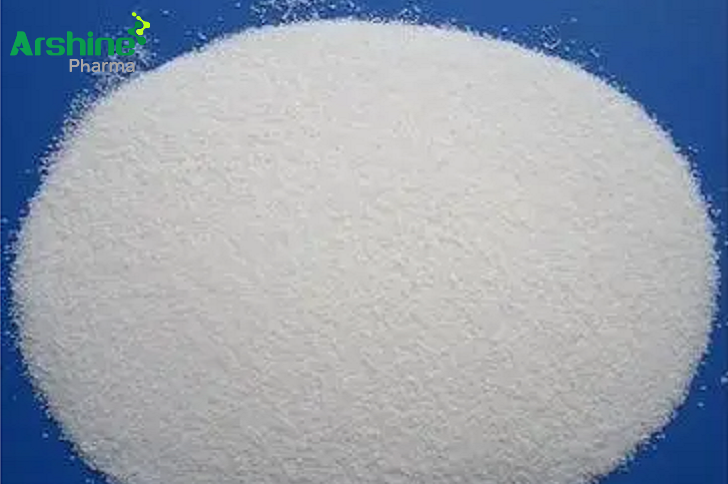
Introduction:Econazole nitrate is a widely used antifungal medication that belongs to the imidazole class. It is primarily utilized for the treatment of fungal infections of the skin, nails, and mucous membranes. Econazole nitrate demonstrates efficacy against a broad spectrum of fungal organisms, making it a valuable option in antifungal therapy. This article aims to provide a detailed description of the role and efficacy of econazole nitrate, exploring its mechanism of action, clinical applications, potential benefits, and safety considerations.
-
Mechanism of Action: Econazole nitrate exerts its antifungal activity by inhibiting the synthesis of ergosterol, a vital component of fungal cell membranes. By disrupting ergosterol production, econazole nitrate compromises the integrity of the fungal cell wall, leading to cell death. Additionally, econazole nitrate exhibits fungicidal and fungistatic properties, depending on the concentration and specific fungal species.
-
Clinical Applications: a) Cutaneous Fungal Infections: Econazole nitrate is commonly prescribed for the treatment of various superficial fungal infections, including athlete's foot (tinea pedis), ringworm (tinea corporis), jock itch (tinea cruris), and fungal diaper rash. Its topical formulation allows for direct application to the affected area, promoting targeted treatment.
b) Vaginal Candidiasis: Econazole nitrate is also available in the form of vaginal cream or suppositories for the treatment of vaginal yeast infections caused by Candida species. Its antifungal properties help alleviate symptoms such as itching, burning, and abnormal discharge.
c) Dermatophyte Nail Infections: Econazole nitrate has been utilized as a topical treatment for dermatophyte nail infections (onychomycosis) caused by fungi such as Trichophyton and Epidermophyton species. However, it is important to note that systemic antifungal agents are generally more effective for nail infections.
-
Efficacy and Benefits: a) Broad-Spectrum Antifungal Activity: Econazole nitrate demonstrates efficacy against various fungal organisms, including dermatophytes (e.g., Trichophyton, Microsporum), yeasts (e.g., Candida), and certain molds. This broad-spectrum activity allows for effective treatment of a range of fungal infections.
b) Symptom Relief: Econazole nitrate effectively relieves symptoms associated with fungal infections, such as itching, redness, inflammation, and discomfort. By targeting the underlying fungal growth, it helps restore the affected area to a healthy state.
c) Topical Convenience: The topical formulation of econazole nitrate allows for easy and direct application to the affected area, facilitating targeted treatment. It is generally well-tolerated and does not have systemic side effects associated with oral antifungal medications.
-
Safety Considerations: Econazole nitrate is considered safe for most individuals when used as directed. However, it is important to consider certain safety considerations and potential side effects. These may include:
a) Skin Irritation: In rare cases, econazole nitrate may cause skin irritation, redness, or allergic reactions. It is recommended to discontinue use and consult a healthcare professional if any adverse reactions occur.
b) Drug Interactions: Econazole nitrate may interact with certain medications, such as warfarin or other anticoagulants, leading to an increased risk of bleeding. It is important to inform healthcare professionals about all medications being taken to minimize the risk of potential interactions.
c) Pregnancy and Lactation: The use of econazole nitrate during pregnancy or breastfeeding should be discussed with a healthcare professional, as there is limited data available on its safety in these situations.
-
Proper Usage and Precautions: a) Adherence to Treatment: It is important to follow the prescribed treatment regimen and complete the full course of econazole nitrate therapy, even if symptoms improve. This helps ensure complete eradication of the fungal infection and prevents recurrence.
b) Avoiding Contact with Eyes and Mouth: Econazole nitrate is intended for external use only and should not be applied to the eyes or ingested. In case of accidental contact, it is recommended to rinse thoroughly with water and seek medical advice if necessary.
c) Safety in Children: Econazole nitrate can be used in children, but proper caution and adherence to pediatric dosing guidelines are essential. It is advised to consult a healthcare professional before using econazole nitrate in children.
Conclusion: Econazole nitrate plays a vital role in the management of fungal infections of the skin, nails, and mucous membranes. Its mechanism of action, inhibiting ergosterol synthesis, effectively targets fungal cells, leading to their destruction. The broad-spectrum antifungal activity, topical convenience, and symptom relief provided by econazole nitrate make it a valuable choice in antifungal therapy. By considering safety considerations and adhering to proper usage guidelines, healthcare professionals can optimize the efficacy of econazole nitrate and provide effective treatment for individuals suffering from fungal infections.
